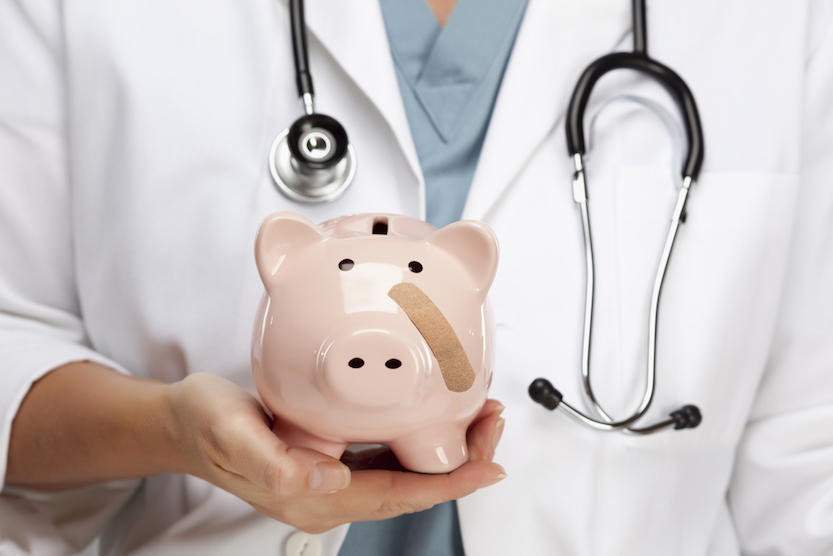



Get new exclusive access to healthcare business reports & breaking news




According to a recently released federal report, government at all levels will be paying nearly half the nation’s health care tab in less than 10 years.
The numbers are quite clear and the burden of health related spending is expected to significantly grow throughout the next decade.
National health expenditures are projected to grow at an average annual rate of 5.5 percent for 2018–27 and represent 19.4 percent of gross domestic product in 2027.
National health spending is projected to grow faster than the projected growth in Gross Domestic Product (GDP)-by 0.8 percentage points over the same period of time. It is believed this will cause the health share of GDP to rise from 17.9 percent in 2017 to 19.4 percent by 2027.
Medicare spending growth is projected to record the fastest rate among major payers: an average 7.4 percent over 2018-2027. The main reason for this growth is the enrollment of baby-boomers, as they get older and need switch out of private insurance and into Medicare and Medicaid, while needing more and more care and health services. Average annual spending growth in Medicare (7.4 percent) is expected to surpass that of Medicaid (5.5 percent) and private health insurance (4.8 percent) over the projection period, mostly because many more people would enroll in Medicaid. Around 90 percent of the populations would be insured throughout the period, projections say, and net gains in health coverage from all sources are expected to be proportional to population growth.
As a result of comparatively higher projected enrollment growth in Medicare, average annual spending growth in Medicare (7.4 percent) is expected to exceed that of Medicaid (5.5 percent) and private health insurance (4.8 percent). Health care spending is expected to increase somewhat more rapidly than overall economic growth from 2018 to 2027, underscoring an ingrained affordability problem for government, employers and U.S. households.
After a major health reform during a ten year period greatly influenced by economic recession, national health spending growth during 2018–27 is expected to be mainly driven by demographic changes and economic factors crucial to the healthcare system.
Prices for health care goods and services are projected to grow 2.5 percent per year, on average, for 2018–27—faster than the average price growth experienced over the last decade—and to account for nearly half of projected personal health care spending growth.
National health spending and enrollment over the next decade is expected to be influenced not only by the economic and demographic factors already mentioned (i.e., growth in income and employment, continuing baby-boom generation transferral from private insurance into Medicare). Increases in prices for medical goods and services are also projected to grow 2.5 percent over 2018-2027, compared to 1.1 percent between 2014-2017.
This year’s findings are similar to those of last year, and the report found that by 2027, federal, state and local governments are projected to finance 47 percent of national health spending, an increase of 2 percentage points from 45 percent in 2017.
However, the report did not take into consideration the impact of “Medicare-for-all”, the national health insurance plan Democratic presidential candidate Bernie Sanders and other liberals intend to put in place, if they win the elections. In just a few years, the situation of Medicare could become a very pressing political priority for all parties involved, because of the financial issues it will have to face. As quickly as within the next seven years, Medicare’s trustees have said it will be insolvent, because its huge trust fund for inpatient care won’t fully cover projected medical bills.
The report is a down-to-earth reminder that every political decision that leads to specific laws and policies has economic consequences, and sometimes these can be dreary. Between President Donald Trump’s warnings about “socialism” and the suggestion coming from Sen. Kamala Harris, D-Calif., a 2020 contender, that the U.S. should “move on” to a new taxpayer-financed system with coverage for all Americans, it is uncertain where the future of the healthcare system lays. What seems certain, at least for now, is that the Government will have to pay for almost half of the expenses.
“To the extent that a Martian landed and saw how much of the American healthcare system is funded by the government, it’s been about 50 percent for some time,” said economist Paul Hughes-Cromwick of Altarum, a nonprofit research organization.
In 2027, the U.S. health care spending will grow to reach more than 19 percent of the economy, surpassing $5.9 trillion. Healthcare goods and services are going to see a increase in prices, which will account for nearly half the spending growth, according to the report, the rest being dependant on various factors, including a more intensive use of services by an aging, more numerous population. “The baby boom generation is expected to shift from private health insurance coverage to Medicare coverage during the projection period,” said Andrea Sisko, an author of the report.
Another reason for growing medical expenses might be the fact that care prices are higher in the U.S. compared to other economically advanced countries.
As would be expected, countries comparable in wealth to the U.S. spend more per person on health care and related expenses than lower income countries. The U.S., however, spends more per person on health than comparable countries. For instance, in 2017, health spending per person in the U.S. was $10,224, 28 percent more than Switzerland, which came in second per capita among top spenders.
Also, another point to be taken into consideration, according to the report, prescription drug spending is projected to start growing again after a recent slowdown, reaching an average of about 6 percent a year from 2020 to 2027.